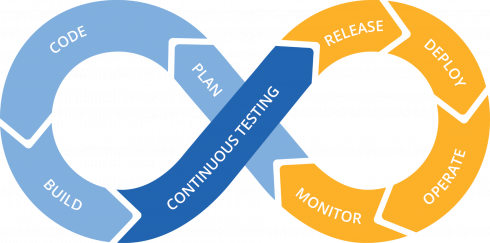
Software has evolved from a process enabler to a competitive differentiator. In fact,software represents the interface to the business — and the point at which the entire brand either succeeds or fails. Despite the heavy dependence on software,developers and testers lack visibility into the business risks caused by changing code. With the demand for new software at an all-time high,software testing practices must be transformed to both protect and more importantly elevate the brand.
Using the Tricentis Continuous Testing Platform, organizations gain the visibility and control to manage the risk of releases. The platform includes:
- Agile Dev-Testing – Rapid, in-sprint testing and Agile test management shifts-left your testing effort with deep support for open source tools
- Intelligent Test Automation – With over 120 technologies and packaged applications supported out-of-the-box, it enables intelligent automated regression testing across any architecture or application stack at the speed of DevOps; and
- Continuous Load Testing – Delivers a cloud-based, on-demand performance testing lab that allows any tester to prevent application performance issues
As software evolves, quality becomes harder to maintain. With increasing levels of complexity and accelerating release cadences,testers require a central platform which enables them to understand whether the release candidate has an acceptable level of risk.“Even though an incremental change to an application or a service may be an atomic piece of work, it’s often a component that impacts multiple applications, machines and processes,”said Wayne Ariola, chief marketing officer at Tricentis. “The Tricentis Continuous Testing Platform allows organizations to understand the complexity of a release and how it impacts quality, which is essential for speed and ultimately DevOps success.”
Scale Agile and DevOps success
Agile and DevOps practices have little value if the resulting software puts the business at risk.The Tricentis Continuous Testing Platform allows test creation, management and execution to be approached from a business risk perspective.While most organizations are able to tell if a requirement or user story has been tested,they have no insight into the potential business risks a change may cause.
“Even though the user story can be broader than the code change, it’s still a bottom-up description,”said Ariola.“Yet,that user story may impact a larger set of transactions or processes. So to say that the component changed as expected is one thing, but to understand the risk profile associated with the broader impact of that change is totally different.”
Software testing has been approached as a bottom-up activity, validating the user story at change time.Business risk management is a top-down exercise.Achieving both in a single platform, at scale, is critical to ensure the value of software over time.
“We give you the ability to understand how to prioritize your tests based on business risk, which is becoming increasingly critical,”said Ariola.“You also know how to prioritize the execution of those tests to meet your time constraint.”
The Tricentis Continuous Testing Platform is test-agnostic with broad support for open source tools. It also supports Tricentis’ model-based test automation (MBTA). That way, different teams can continue using their preferred tools, understand the impact of code changes, and see whether the release candidate’s level of business risk is acceptable.
The industry average test automation rate is less than 20% for large enterprises.This must improve significantly to provide the fast feedback required for quality@speed.To get there, faster and simpler ways of creating =automated tests and a sustainable way to maintain them, is necessary to escape the “maintenance trap” created by flaky, brittle tests. Tricentis MBTA significantly reduces the overhead associated with the construction and maintenance of tests.
“With model-based test automation, you’re able to make global changes to your complete test suite in seconds versus days or even weeks,”said Ariola.
Creating an automated test is one thing, ensuring that the test will run is another. The Tricentis Continuous Testing platform provides risk-based design,test data management,service virtualization and advanced analytics to ensure tests can be executed where and when they’re needed. Testers also benefit from the consolidated analytics and decision criteria required to meet advanced automation goals.
Some organizations have arduous compliance requirements that require them to track = the impact of a change across everything from legacy systems to microservices. Achieving that is difficult if not impossible without a continuous testing platform that is capable of tracking such changes.
Learn more at www.tricentis.com.





